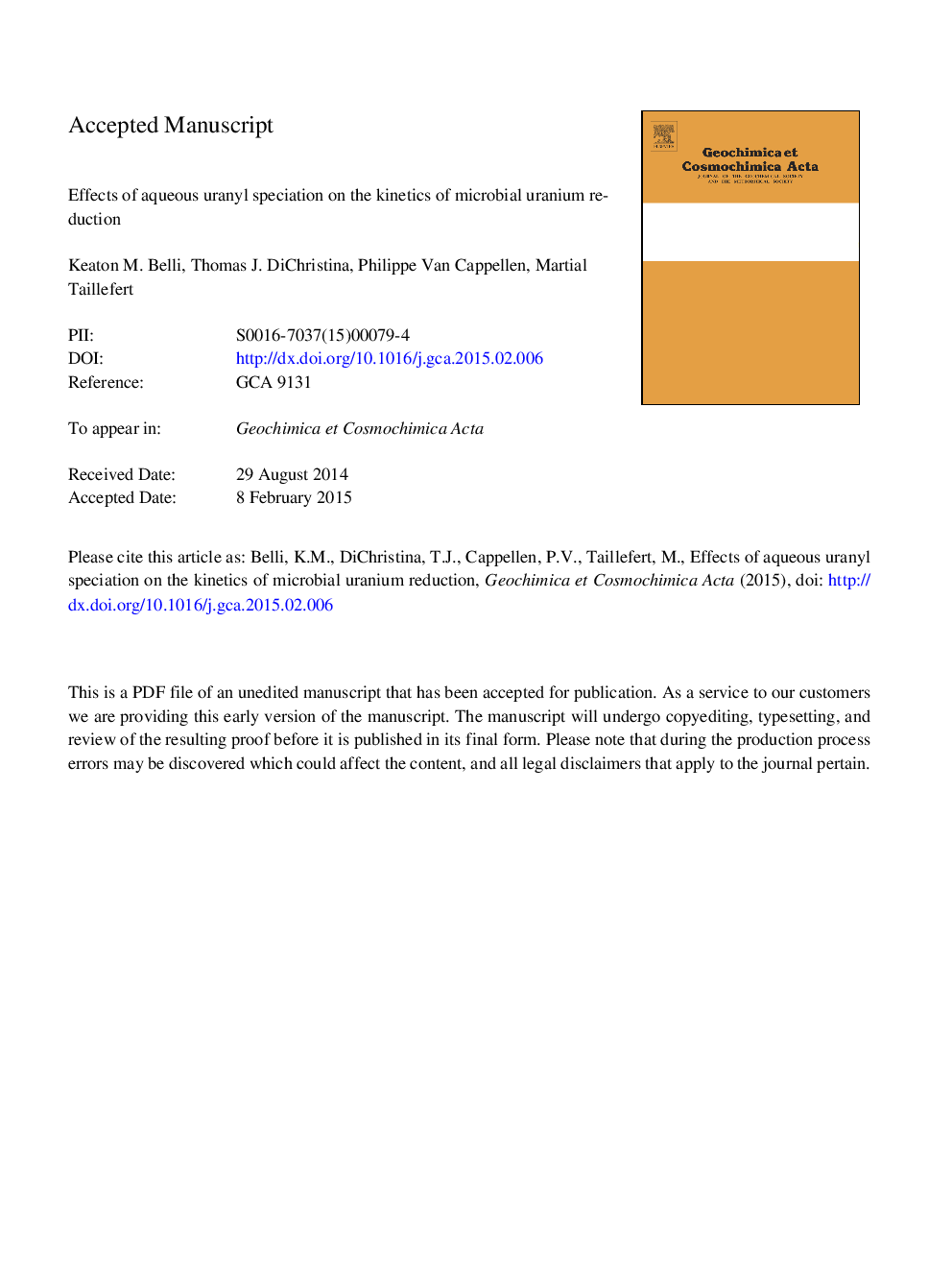| کد مقاله | کد نشریه | سال انتشار | مقاله انگلیسی | نسخه تمام متن |
|---|---|---|---|---|
| 6438118 | 1638000 | 2015 | 47 صفحه PDF | دانلود رایگان |
عنوان انگلیسی مقاله ISI
Effects of aqueous uranyl speciation on the kinetics of microbial uranium reduction
ترجمه فارسی عنوان
تأثیر آب بندی اورانیل بر روی سینتیک کاهش اورانیوم میکروبی
دانلود مقاله + سفارش ترجمه
دانلود مقاله ISI انگلیسی
رایگان برای ایرانیان
موضوعات مرتبط
مهندسی و علوم پایه
علوم زمین و سیارات
ژئوشیمی و پترولوژی
چکیده انگلیسی
The ability to predict the success of the microbial reduction of soluble U(VI) to highly insoluble U(IV) as an in situ bioremediation strategy is complicated by the wide range of geochemical conditions at contaminated sites and the strong influence of aqueous uranyl speciation on the bioavailability and toxicity of U(VI) to metal-reducing bacteria. To determine the effects of aqueous uranyl speciation on uranium bioreduction kinetics, incubations and viability assays with Shewanella putrefaciens strain 200 were conducted over a range of pH and dissolved inorganic carbon (DIC), Ca2+, and Mg2+ concentrations. A speciation-dependent kinetic model was developed to reproduce the observed time series of total dissolved uranium concentration over the range of geochemical conditions tested. The kinetic model yielded the highest rate constant for the reduction of uranyl non-carbonate species (i.e., the 'free' hydrated uranyl ion, uranyl hydroxides, and other minor uranyl complexes), indicating that they represent the most readily reducible fraction of U(VI) despite being the least abundant uranyl species in solution. The presence of DIC, Ca2+, and Mg2+ suppressed the formation of more bioavailable uranyl non-carbonate species and resulted in slower bioreduction rates. At high concentrations of bioavailable U(VI), however, uranium toxicity to S. putrefaciens inhibited bioreduction, and viability assays confirmed that the concentration of non-carbonate uranyl species best predicts the degree of toxicity. The effect of uranium toxicity was accounted for by incorporating the free ion activity model of metal toxicity into the bioreduction rate law. Overall, these results demonstrate that, in the absence of competing terminal electron acceptors, uranium bioreduction kinetics can be predicted over a wide range of geochemical conditions based on the bioavailability and toxicity imparted on U(VI) by solution composition. These findings also imply that the concentration of uranyl non-carbonate species, despite being extremely low, is a determining factor controlling uranium bioreduction at contaminated sites.
ناشر
Database: Elsevier - ScienceDirect (ساینس دایرکت)
Journal: Geochimica et Cosmochimica Acta - Volume 157, 15 May 2015, Pages 109-124
Journal: Geochimica et Cosmochimica Acta - Volume 157, 15 May 2015, Pages 109-124
نویسندگان
Keaton M. Belli, Thomas J. DiChristina, Philippe Van Cappellen, Martial Taillefert,
